During the Eighties, the World Rally Championship activities of Toyota Team Europe (TTE) continued to be as selective as they had been in the previous decade. The team’s calendar was largely dependent on national marketing requirements, plus the suitability of each event to the RA40 Celica 2000 GT the team was campaigning in the top Group 4 category.
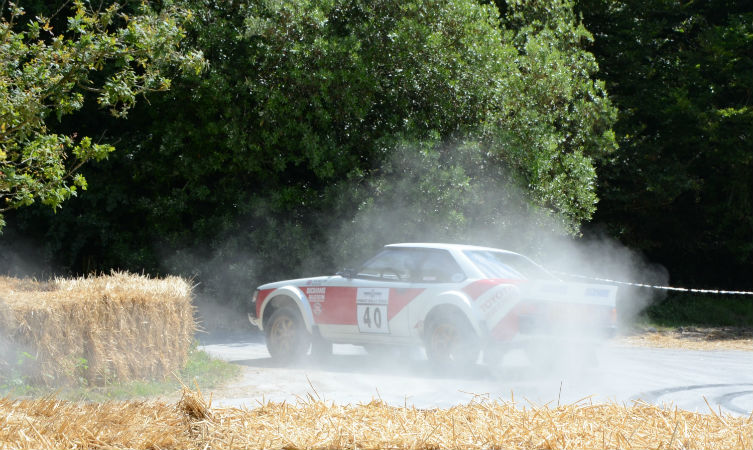
The first couple of years were frustrating for Toyota as the naturally aspirated Celica struggled to compete against a new generation of turbocharged rally cars that had started to emerge. Swedish manufacturer Saab was the first to adopt forced induction, winning its home rally in 1978 using a turbocharged front-wheel drive car, and Renault had won the 1981 Monte Carlo Rally using a turbocharged supermini converted to rear-wheel drive. Most dramatic of all, however, Audi had started winning rallies with its new turbocharged four-wheel drive model.
At WRC level, there was little that Toyota could do to become immediately competitive on the global scene. Patience was necessary, because behind the scenes an all-new turbocharged Toyota Celica was being developed by TTE in its new base in Cologne, Germany, ready for homologation and a planned launch in 1983.
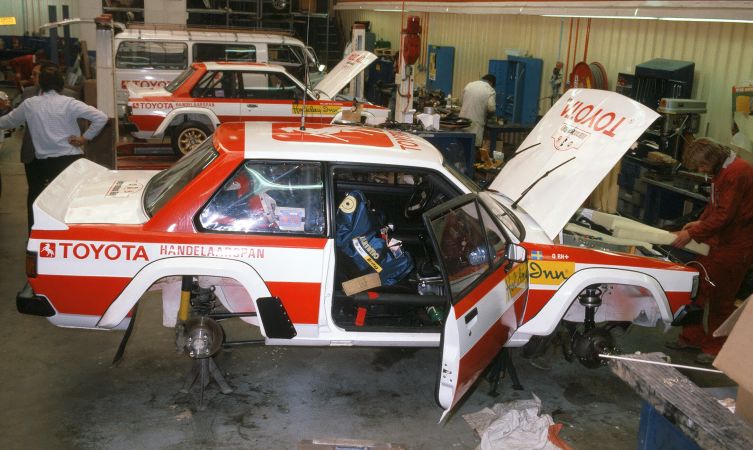 Image: Toyota South Africa in 1981, creating its special 2.2-litre KE70 Corolla models for national championships
Image: Toyota South Africa in 1981, creating its special 2.2-litre KE70 Corolla models for national championships
Nevertheless, important Toyota-related motorsport activities were developing around the world, particularly in countries that did not adhere to the FIA’s strict homologation requirements. A few years previously, Hannu Mikkola had used an experimental third-generation KE35 Corolla coupe with a bigger engine in the 1977 British Open championship, with the aim of competing against more powerful models from Ford and Vauxhall. This led to 2.2-litre engines being installed in fourth-generation Corolla saloon (KE70) and coupe (KE72) models in South Africa and Canada respectively, the latter especially proving its worth by winning the national championship in 1980.
Before the arrival of a new turbocharged competitor, Toyota’s fortunes had begun to change when two examples of the new third-generation RA63 Celica 2000 GT shocked the rallying fraternity by delivering an impressive result in the Group 4 class of the 1982 South Swedish Rally. Still naturally aspirated, the coupes finished in second and third place overall in the hands of local drivers Leif Asterhag and Björn Waldegård.
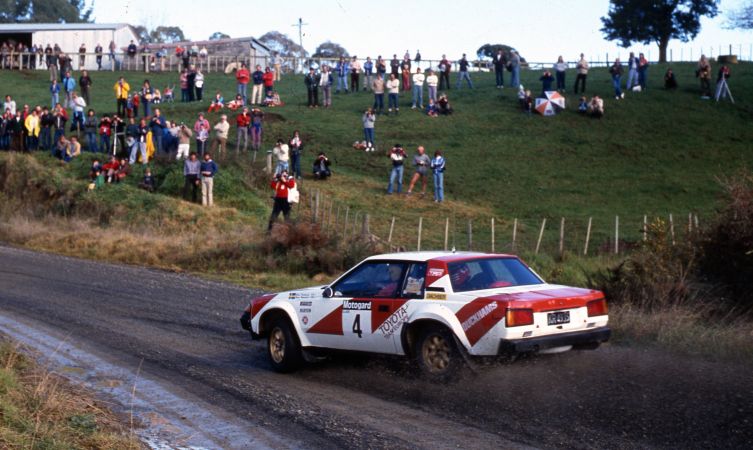 Image: Impressive pace of new RA63 Celica 2000 GT in 1982 New Zealand rally
Image: Impressive pace of new RA63 Celica 2000 GT in 1982 New Zealand rally
A little over a month later, a further development of the RA63 Celica was applied in time for the 1982 Motogard Rally of New Zealand. Though not immediately obvious from an external perspective, TTE had shifted the engine and powertrain slightly further back within the chassis of the two cars, thereby dramatically improving their traction.
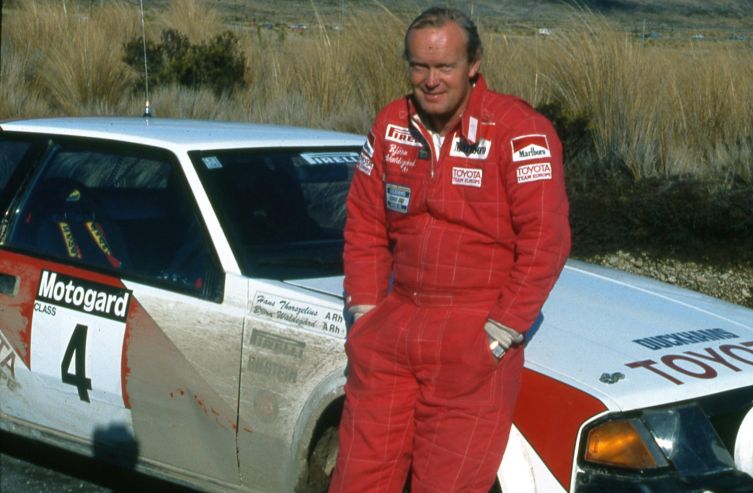 Image: Björn Waldegård relaxes after his important victory in 1982 New Zealand rally
Image: Björn Waldegård relaxes after his important victory in 1982 New Zealand rally
The Motogard Rally was not a happy event for some – Lancia failed to enter, Opel only sent one car and both Audi models experienced mechanical issues which put them out of contention – but drivers Björn Waldegård and Per Eklund put in a resounding one-two finish that marked an important historic victory for Toyota. The Celica had been campaigning in world rallying for ten years, yet this event in New Zealand was the first WRC win for the hard-working model.
 Image: TA63 Toyota Celica Twincam Turbo at the 1983 1000 Lakes Rally
Image: TA63 Toyota Celica Twincam Turbo at the 1983 1000 Lakes Rally
The competition debut of TTE’s new TA63 Toyota Celica Twincam Turbo at the 1983 1000 Lakes Rally in Finland was also accompanied by the arrival of a significant new driver. Juha Kankkunen was the first wave of Ove Andersson’s long-term plan to find and coach talented young drivers. The Finn certainly made a good first impression by finishing in sixth place, beaten only by three all-wheel drive Audis and two rear-wheel drive Lancias. He was also well ahead of team-mate Björn Waldegård in the second TA63.
The second appearance for the TA63 Celica was in the eleventh round of that year’s championship, the Ivory Coast Rally, where TTE fielded a three-car attack. Waldegård won the event, Ekland came third, and Kankkunen was forced to retire. It was evident that the African continent was a good place for the rear-wheel drive Toyota. Indeed, this event was the first of six significant wins for Toyota with this car – three times in the Safari Rally in Kenya and another three in the Ivory Coast – which earned the TA63 the title ‘King of Africa’.
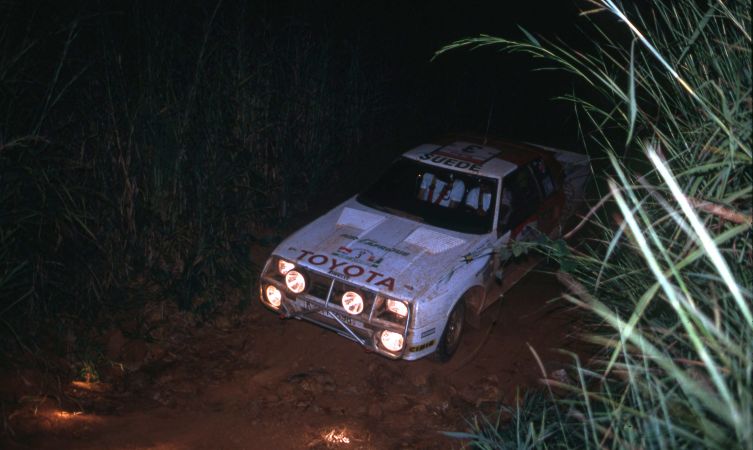 Image: 1983 Ivory Coast Rally was one of six significant wins for the TA63 Celica in Africa
Image: 1983 Ivory Coast Rally was one of six significant wins for the TA63 Celica in Africa
The TA63 Celica was campaigned through to the end of the 1986 season, at which point its motorsport career was cut short by a change of rules that banned further use of powerful Group B cars in favour of new Group A regulations.
This unexpected rule change was a major blow, as Toyota was already well along in its development of far-reaching turbocharged four-wheel drive projects that would comply with the FIA’s proposed new Group S formula. The MR2-based 222D was one radical prototype built by TTE that suddenly became ineligible for competition before it had a chance to prove itself.
However, another project, this time by Toyota in South Africa yet supported by TTE, managed to escape these regulations and see service in national championships. This highly modified version of the domestic Conquest model (fifth-generation three-door Corolla) mated a mid-mounted turbocharged 2.2-litre engine to an Xtrac four-wheel drive transmission. This special project was used successfully in competition in South Africa through to 1988, when the national formula reverted to naturally aspirated cars.
Back in Europe, the sudden WRC rule change for 1987 forced Toyota to rethink its approach to the championship. Three options were available, two of which were closely related. The most immediate solution was to use the new third-generation Toyota Supra 3.0i, though it was larger than most Group A competitors, relatively heavy, normally aspirated and not bred for competition. The second proposal was to adapt the forthcoming turbocharged version of the MA70 Supra to those same regulations and compete in selected events as soon as it was officially homologated. The third proposal was to use the forthcoming ST165 Celica GT-Four, though this would not appear in competition until the following year.
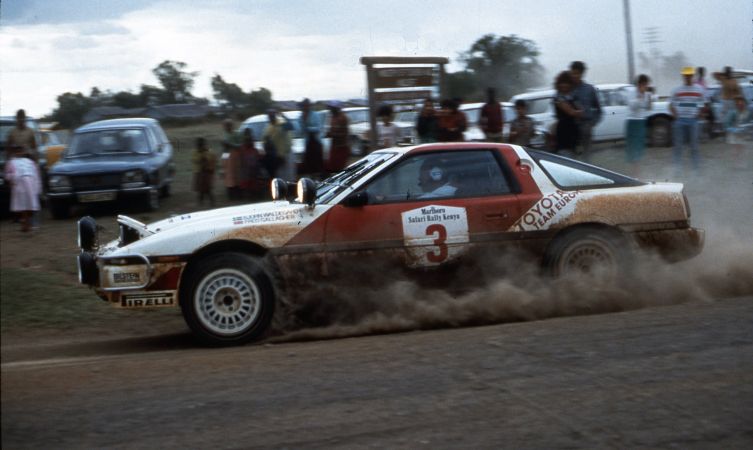 Image: 1987 Safari Rally was the first appearance for the new MA70 Supra
Image: 1987 Safari Rally was the first appearance for the new MA70 Supra
The normally aspirated MA70 Supra 3.0i made its first appearance in the 1987 Safari Rally. Despite its clear disadvantages, Björn Waldegård’s car led the rally until the final day when its straight-six engine overheated, leaving team-mate Lars-Erik Torph to finish the race in third place. Not long afterwards, the Supra scored its first and only success in the non-championship but commercially important Hong Kong-Beijing Rally.
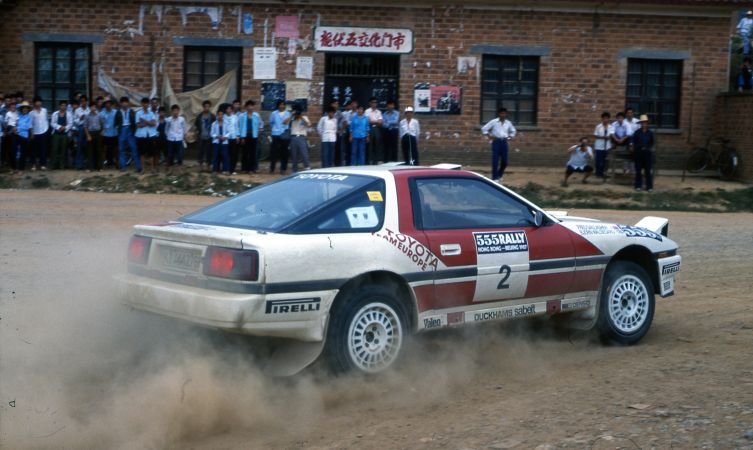 Image: Waldegård competing in the 1987 Hong Kong-Beijing Rally
Image: Waldegård competing in the 1987 Hong Kong-Beijing Rally
On the back of this success, Toyota had greater hopes for the recently homologated 400bhp Supra Turbo (still MA70 chassis) in the 1987 Ivory Coast Rally. But almost immediately after its debut TTE suddenly withdrew all three entries mid-race following a tragic light aircraft accident that killed Henry Liddon and his assistant Nigel Harris. Liddon had been a popular member of the crew, progressing from senior co-driver to being team manager and effectively Ove Andersson’s right-hand man. As a mark of respect it was felt that the team couldn’t carry on without them.
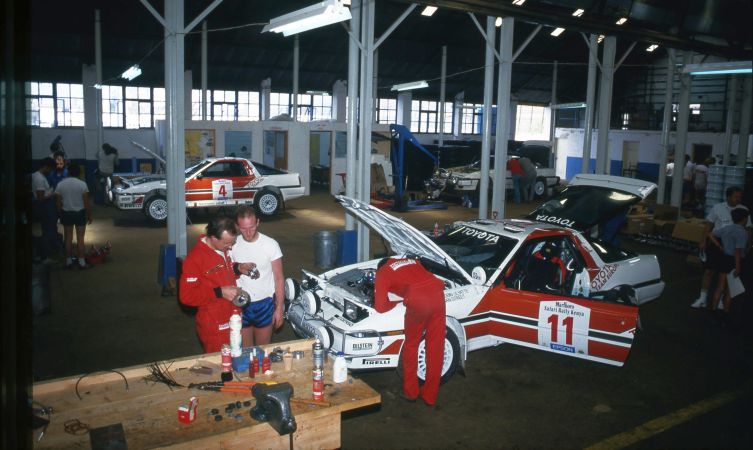 Image: Preparation area for the Safari Rally. The MA70 Supra Turbo appeared in 1988 and 1989
Image: Preparation area for the Safari Rally. The MA70 Supra Turbo appeared in 1988 and 1989
The turbocharged MA70 Supra appeared again in competition only twice, both of which were in the Safari Rally events of 1988 and 1989. Unfortunately, the team was unable to repeat the success of the earlier, less powerful car. In the former rally, Juha Kankkunen led the event only to run into turbocharger trouble, leaving the trio of Supras to finish in a disappointing fourth, fifth and seventh place. Then in 1989 the team finished in fourth and fifth place, this time with no redeeming excuse. Admittedly, there had been trouble with the power output and this had been improved with the fitment of an extra intercooler but the Supra Turbo never quite provided the right level of performance for this rallying discipline.
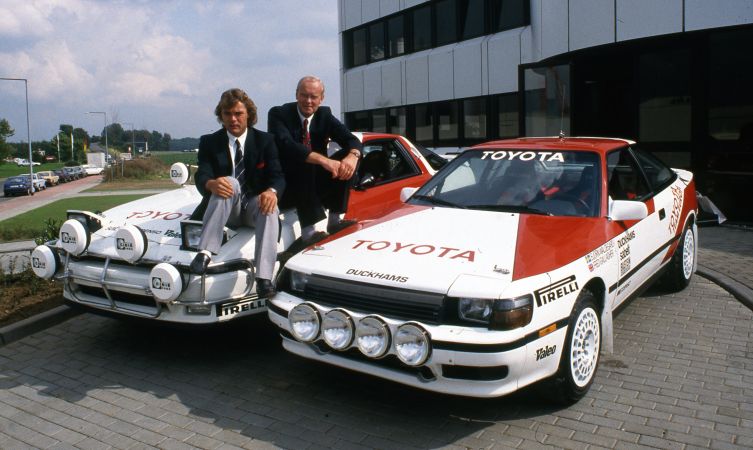 Image: Torph (left) and Waldegård (right) in 1987, presenting the new ST165 Celica GT-Four that would supercede the outgoing MA70 Supra
Image: Torph (left) and Waldegård (right) in 1987, presenting the new ST165 Celica GT-Four that would supercede the outgoing MA70 Supra
By this time, the Supra’s replacement, the turbocharged ST165 Toyota Celica GT-Four, had already appeared, having made its debut at the all-asphalt Tour de Corse in 1988. But despite Toyota intending to make an immediate all-out attack on the world championship with this new four-wheel drive challenger, the Celica GT-Four did not arrive as the complete competition product. For the next 18 months, TTE suffered a series of frustrations with the engine and transmission that forced the team to put their championship aims on hold and enter a selection of smaller events instead.
The engine troubles were directly related to cooling problems, caused by a body design that made it difficult to overcome high under-bonnet temperatures. And because this design had been homologated, it was not possible for Toyota to alter it. Meanwhile, the transmission was also overheating, which would in turn cause the hydraulically-operated centre differential to fail and create handling issues without warning.
Eventually, however, things started to go right for Toyota and the ST165 Celica rally car. Waldegård scored the first win for the car on the 1987 Cyprus Rally in the European Rally Championship, and at the end of that year finished third on the RAC Rally in the World Rally Championship.
TTE’s policy of competing in smaller events continued to produce encouraging results right into the end of the decade. In 1989, Carlos Sainz and Kenneth Eriksson came third and fourth respectively in the 1000 Lakes Rally, but there was greater anxiety for Rally Australia – not just because of the greater distance involved but because Juha Kankkunen had just signed an agreement to leave the team at the end of the year. Nevertheless, the Finnish driver flew through the Outback to secure the ST165 its first WRC win.
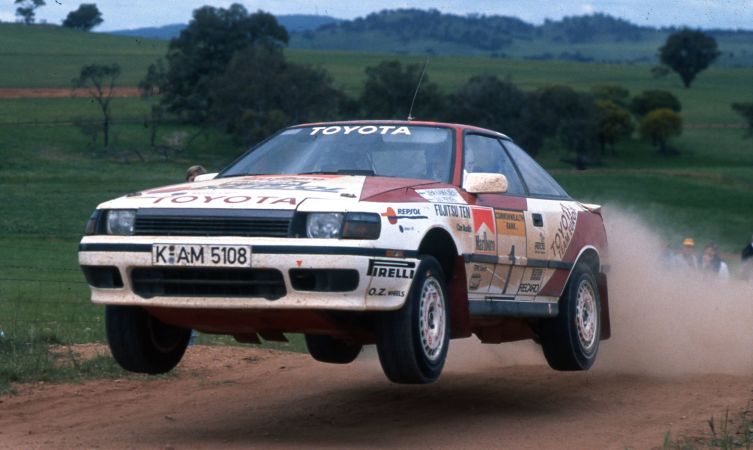 Image: Kankkunen flying his ST165 Celica GT-Four to victory in the 1989 Rally Australia
Image: Kankkunen flying his ST165 Celica GT-Four to victory in the 1989 Rally Australia
Before the 1989 season closed, Sainz led the Lombard RAC Rally for almost half the distance before being delayed by a broken transmission shaft which gifted another manufacturer the win. Despite this misfortune, the team finished in second, third and fourth places, delivering a creditable ending to an otherwise disappointing decade in world rallying for Toyota and TTE.
Read more: History of Toyota in world rallying – 1970s
Text and captioned images supplied by Martin Holmes
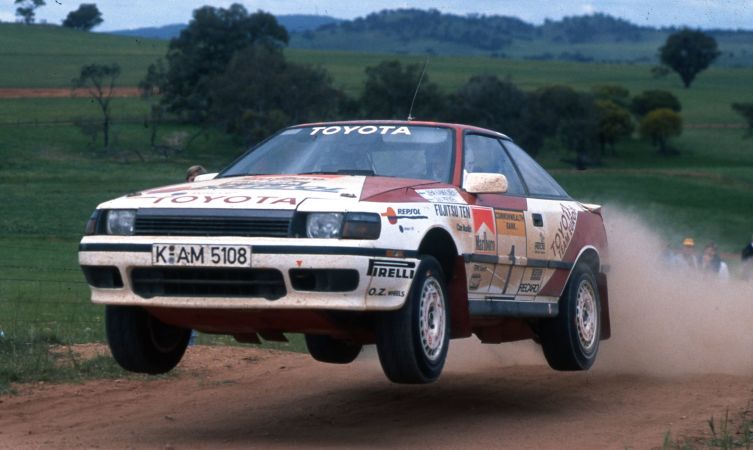

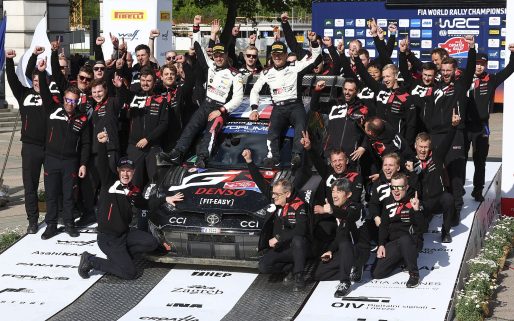
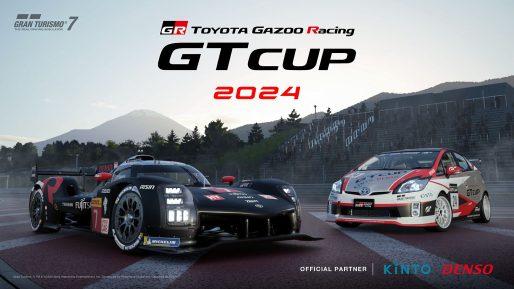
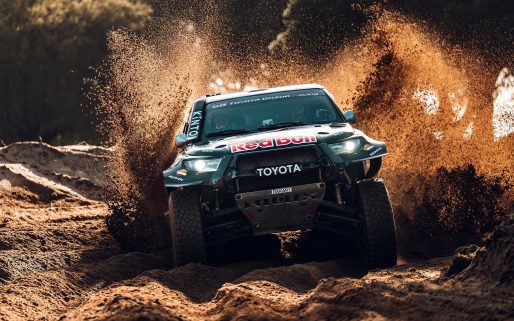
Dear all ,
thanks for the nice Story , I was a Team Member ( inTTE ) from 1980 to 2010 .Thansk to Mr.Ove Andersson !! It was a honor to work for him . The Best Time of my Life !!
I stil own a Group B Celica from 1986 Winner car Rally Cote Ivore, Driver Björn Waldegard
, 222D Prototype Grtuop S ( Black Monster )
ST 165 Celica 4WD from 1988.
kind regards
Ernst Kopp
I was wondering what ever happened to the MA70 supras that drove in the 1987 and 88 safari rallys